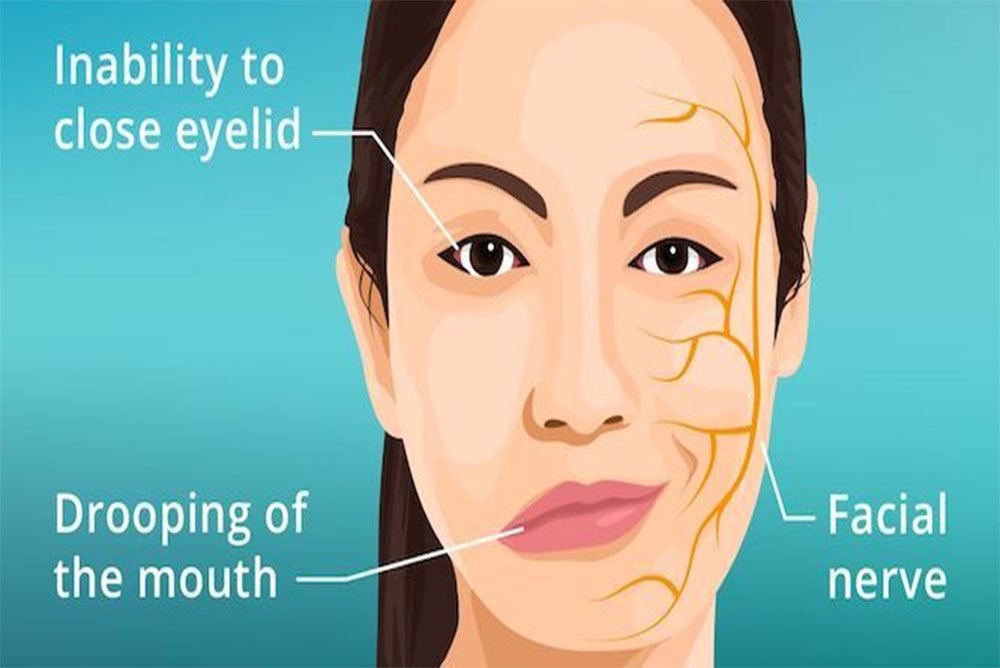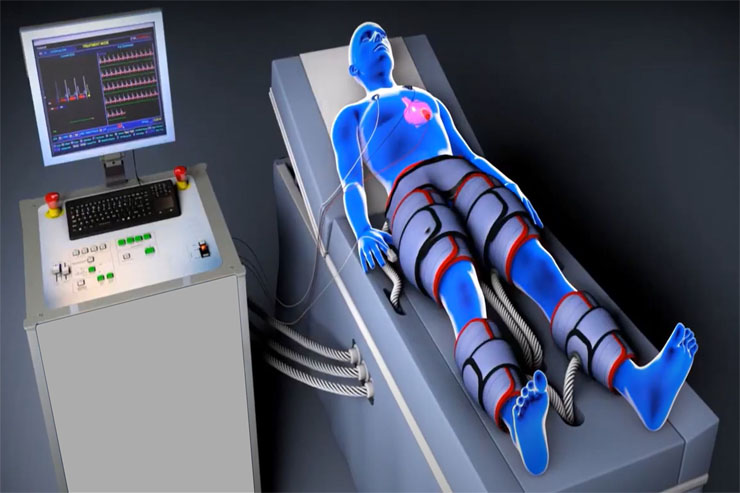
September 12, 2023
Bell’s Palsy : Understanding and Treating.
Bell’s Palsy is a condition that affects thousands of individuals worldwide, causing sudden facial paralysis and impacting both physical and emotional well-being. With its exact cause still unknown, this condition can be both confusing and overwhelming for those who experience it. However, there is hope on the road to recovery. In this article, we will delve deep into understanding Bell’s Palsy and explore the various treatment options available.
What is Bell’s Palsy?
Bell’s Palsy is a condition characterized by the sudden and unexplained paralysis or weakness of facial muscles on one side of the face. This condition can occur at any age, but it is most commonly seen in individuals between the ages of 15 and 60. The exact cause of Bell’s Palsy is still unknown, but it is believed to be related to viral infections, specifically the herpes simplex virus.
The onset of Bell’s Palsy is often rapid, with symptoms appearing within a few hours or days. These symptoms may include drooping of one side of the face, difficulty closing the eye on the affected side, loss of taste, hypersensitivity to sound in one ear, and excessive tearing or drooling. It is important to note that these symptoms may vary from person to person, and the severity of the condition can also differ.
Causes and risk factors of Bell’s Palsy.
As mentioned earlier, the exact cause of Bell’s Palsy is still unknown. However, several factors have been identified as potential contributors to the development of this condition. One of the leading theories suggests that viral infections, particularly the herpes simplex virus, may trigger the inflammation of the facial nerve, leading to paralysis or weakness.
Other risk factors that may increase an individual’s susceptibility to Bell’s Palsy include a family history of the condition, a recent upper respiratory infection, diabetes, pregnancy, and a weakened immune system. It is important to note that while these factors may increase the risk, not everyone with these conditions will develop Bell’s Palsy.
Common Causes of Spinal Cord Injuries.
Spinal cord injuries can occur as a result of a wide range of events and circumstances. Motor vehicle accidents, falls, sports injuries, and acts of violence are among the leading causes of SCIs. The forceful impact of these events can cause the vertebrae to fracture or dislocate, damaging the delicate spinal cord within. Other causes of spinal cord injuries include diseases such as tumors, infections, and degenerative conditions like spinal stenosis. It is important to note that prevention plays a crucial role in reducing the incidence of spinal cord injuries. Practicing safe driving habits, using protective equipment during sports activities, and maintaining a healthy lifestyle can all contribute to minimizing the risk of sustaining a spinal cord injury.
Signs and symptoms of Bell’s Palsy.
Bell’s Palsy is characterized by various signs and symptoms that can significantly impact an individual’s daily life. The most noticeable symptom is the sudden paralysis or weakness of the facial muscles on one side of the face. This can result in a drooping appearance on that side, making it difficult to smile, close the eye, or control facial expressions.
In addition to facial paralysis, individuals with Bell’s Palsy may experience other symptoms such as pain or discomfort around the jaw or behind the ear on the affected side. They may also have difficulty speaking or eating, as the muscles responsible for these actions may be affected. Some individuals may also experience changes in taste or increased sensitivity to sound in one ear.
Diagnosing Bell’s Palsy.
If you suspect that you or someone you know may be experiencing Bell’s Palsy, it is important to seek medical attention promptly. A healthcare professional will typically perform a physical examination and review the individual’s medical history to rule out other potential causes of facial paralysis. Imaging tests such as an MRI or CT scan may also be recommended to rule out any other underlying conditions.
It is worth noting that diagnosing Bell’s Palsy can be challenging, as there is no specific test that can definitively confirm the condition. However, the combination of the individual’s symptoms, physical examination findings, and exclusion of other potential causes can lead to a diagnosis of Bell’s Palsy.
Treatment options for Bell’s Palsy.
Although there is no cure for Bell’s Palsy, several treatment options are available to help individuals recover and manage their symptoms. The specific approach to treatment will depend on the severity of the condition and the individual’s unique circumstances. Some common treatment options include:
- Medication: In some cases, healthcare professionals may prescribe medications such as corticosteroids to reduce inflammation and swelling of the facial nerve. These medications are most effective when started within the first few days of symptom onset.
- Physical therapy and exercises: Physical therapy plays a crucial role in the recovery process for individuals with Bell’s Palsy. Exercises and techniques aimed at improving facial muscle strength and coordination can help restore normal function. Physical therapists may also use techniques such as massage and electrical stimulation to stimulate the affected muscles.
- Home remedies and self-care tips: In addition to medical interventions, individuals can also adopt certain self-care measures to support their recovery. These may include applying warm compresses to the affected area, practicing facial exercises, protecting the eye on the affected side with eye drops or an eye patch, and maintaining good overall health through a balanced diet and regular exercise.
It is important to remember that the effectiveness of treatment can vary from person to person, and some individuals may experience a complete recovery while others may have residual weakness or other long-term effects.
Physical therapy and exercises for Bell’s Palsy.
Physical therapy plays a crucial role in the recovery process for individuals with Bell’s Palsy. Exercises and techniques aimed at improving facial muscle strength and coordination can help restore normal function. Physical therapists may also use techniques such as massage and electrical stimulation to stimulate the affected muscles.
One common exercise for Bell’s Palsy is called “eye closure and cheek puff.” To perform this exercise, gently close the eye on the affected side while simultaneously puffing out the cheek on that side. Hold this position for a few seconds and then relax. Repeat this exercise several times throughout the day to improve muscle strength and coordination.
Another exercise that can be beneficial is the “smile and pout.” To perform this exercise, attempt to smile as widely as possible, then transition into a pouting expression. Repeat this sequence of movements several times, focusing on maintaining control and coordination of the facial muscles.
Physical therapists may also use techniques such as massage and electrical stimulation to stimulate the affected muscles. Massage can help promote blood flow to the area and relieve tension, while electrical stimulation can help activate the muscles and improve muscle tone.
Home remedies and self-care tips for Bell’s Palsy.
In addition to medical interventions and physical therapy, there are several home remedies and self-care tips that individuals with Bell’s Palsy can incorporate into their daily routine to support their recovery. These measures can help alleviate symptoms and promote overall well-being:
- Warm compresses: Applying warm compresses to the affected area can help reduce pain, inflammation, and stiffness. Use a clean towel soaked in warm water and gently press it against the paralyzed side of the face for a few minutes at a time.
- Facial exercises: Regularly performing facial exercises can help improve muscle strength and coordination. These exercises can include various movements such as raising the eyebrows, wrinkling the forehead, and smiling as widely as possible. It is important to start slowly and gradually increase the intensity of the exercises to avoid strain.
- Protecting the eye: Bell’s Palsy can often affect the ability to close the eye on the affected side, which can lead to dryness and potential damage. To protect the eye, individuals can use lubricating eye drops or ointments recommended by their healthcare professional. Wearing an eye patch while sleeping can also help prevent the eye from drying out.
- Stress management: Coping with Bell’s Palsy can be stressful, and stress can potentially worsen symptoms. Engaging in stress-relieving activities such as deep breathing exercises, meditation, or yoga can help reduce stress levels and promote overall well-being.
- Maintaining good overall health: Adopting a healthy lifestyle through a balanced diet, regular exercise, and adequate sleep can support the recovery process. Eating a diet rich in fruits, vegetables, lean proteins, and whole grains can provide essential nutrients for healing, while regular exercise can help improve blood flow and overall muscle strength.
Coping with Bell’s Palsy emotionally and mentally.
Bell’s Palsy not only affects individuals physically but also emotionally and mentally. Coping with the sudden facial paralysis and potential changes in appearance can be challenging. It is important to acknowledge and address these emotional and mental aspects of the condition to support overall well-being and recovery.
Seeking support from friends, family, or a support group can be beneficial in coping with the emotional impact of Bell’s Palsy. Sharing experiences, concerns, and feelings with others who have gone through or are going through a similar journey can provide a sense of understanding and support.
Engaging in activities that bring joy and relaxation can also help improve emotional well-being. Whether it’s pursuing a hobby, listening to music, or spending time in nature, finding moments of joy and self-care can help reduce stress and promote a positive mindset.
It is also essential to be patient and kind to oneself during the recovery process. Remember that each individual’s journey is unique, and progress may take time. Celebrating small achievements along the way can help maintain motivation and a positive outlook.
Complications and long-term effects of Bell’s Palsy.
In most cases, Bell’s Palsy resolves on its own within a few weeks to months, with the majority of individuals experiencing a full recovery. However, in some cases, complications or long-term effects may arise.
One potential complication is the development of synkinesis, which refers to the involuntary movement of facial muscles during certain actions. For example, when attempting to smile, individuals with synkinesis may also experience involuntary eyelid closure or movement in other parts of the face. Physical therapy techniques such as biofeedback and electrical stimulation can help manage synkinesis.
Another long-term effect that some individuals may experience is residual weakness or muscle imbalance in the face. In these cases, continued physical therapy and exercises may be necessary to improve muscle strength and restore balance.
Rarely, some individuals may experience incomplete recovery, with persistent facial weakness or other symptoms. In such cases, healthcare professionals may recommend further evaluation and treatment options, such as surgical interventions or specialized therapies.
Conclusion and outlook for recovery.
While Bell’s Palsy can be a challenging condition to navigate, it is important to remember that recovery is possible. With the right treatment approach, including medication, physical therapy, and self-care measures, individuals can experience significant improvement in their symptoms and overall quality of life.
Seeking medical attention promptly, adopting a holistic approach to treatment, and maintaining a positive mindset are key factors in the recovery journey. It is important to remember that each individual’s experience with Bell’s Palsy is unique, and the road to recovery may vary. However, with patience, perseverance, and support, individuals can regain control over their facial muscles and achieve an improved quality of life.
If you or someone you know is experiencing symptoms of Bell’s Palsy, it is crucial to seek medical attention for an accurate diagnosis and appropriate treatment. Remember, you are not alone on this road to recovery. There is hope, and with the right support, you can overcome the challenges of Bell’s Palsy and embrace a brighter future.

Written by
Shafiq Ahmad Khan
Founder & CEO
Dania Medicare Solutions Pvt. Ltd.
Recents Posts
-

14, May 2024
Panchakarma Treatment in India: Natural Ayurvedic Therapy
-

7, May 2024
Kshar Sutra Therapy: Ancient Ayurvedic Remedy for Piles and Fistula Healing
-

30, April 2024
Ayurveda Treatment in India
-

26, April 2024
Best Liver Transplant Surgeons in India
-

24, April 2024
Power of EECP Therapy: A Revolutionary Approach to Heart Health in India


